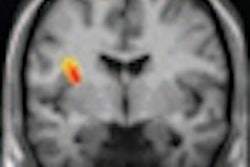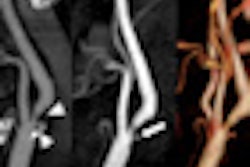Performing MRI sooner on younger stroke patients entering emergency rooms can lower the rate of misdiagnosis and lead to faster, more appropriate treatment, according to research presented at last week's International Stroke Conference 2011 in Los Angeles.
The study, from a group at Wayne State University School of Medicine and Wayne State University Physician Group in Detroit, also showed that patients younger than 35 are at greater risk of being misdiagnosed when exhibiting stroke symptoms.
The researchers examined the cases of 77 patients (mean age, 37.9 years) who reported to an emergency room displaying stroke symptoms. Of those cases, 11 patients (14.5%) were initially misdiagnosed.
When physicians performed an MRI scan within 48 hours of the patient's arrival in the emergency room, the chances of a misdiagnosis decreased. If a patient demonstrating stroke symptoms arrived via ambulance, there was also a lower rate of misdiagnosis. The study group hypothesized that arrival by ambulance may increase an emergency room staff's perception of the severity of a patient's condition.
Accurate diagnosis of stroke on initial presentation in young adults can reduce the number of patients who have continued paralysis and continued speech problems, noted study co-author Seemant Chaturvedi, MD, professor of neurology and director of the Wayne State University-Detroit Medical Center Stroke Program.
Part of the problem is that emergency room staff may not be thinking of a stroke diagnosis when the incoming patient is younger, Chaturvedi said, adding that young adults with symptoms, such as vertigo and nausea, should be assessed much more meticulously.
After 48 to 72 hours, there are no major interventions available to improve stroke outcome. Intravenous delivery of the clot-dissolving agent tissue plasminogen activator (tPA) is the only approved treatment for acute stroke. The drug must be administered within three hours of symptom onset to reduce permanent disability.
This study follows a 2009 study by the same researchers, who reviewed seven years of data on 57 patients between the ages of 16 and 50 enrolled in the Young Stroke Registry at the Comprehensive Stroke Center at Wayne State University School of Medicine.
Four men and three women with an average age of 34 years were misdiagnosed with migraine headaches, vertigo, alcohol intoxication, or other conditions. They were discharged from the emergency room but later were found to have suffered a stroke.
By Wayne Forrest
AuntMinnie.com staff writer
February 14, 2011


.fFmgij6Hin.png?auto=compress%2Cformat&fit=crop&h=100&q=70&w=100)





.fFmgij6Hin.png?auto=compress%2Cformat&fit=crop&h=167&q=70&w=250)











